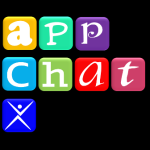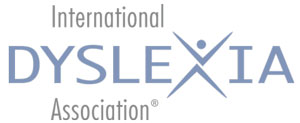April 2014
By Elaine Cheesman, Ph.D.
 Mature vocabulary is essential for comprehending written text with academic vocabulary—words not used in everyday conversation but found mainly in textbooks. Difficulty that people with dyslexia have with pronouncing, reading (decoding), and spelling words typically is related to their ability to process sounds in oral language. Vocabulary and comprehension suffer because they often confuse similar-sounding words (e.g., adopt/adapt)—or phrases (e.g. moot point/mute point). This misuse of words, called malapropisms, originated with the character Mrs. Malaprop in Richard Sheridan’s play, The Rivals (1775). Mrs. Malaprop made people laugh by misusing large words (i.e., She might reprehend [comprehend] the true meaning of what she is saying.). Her name derives from mal à propos, which means “inappropriate” or “out of place.” Mrs. Malaprop might have enjoyed the comic effect (or is it affect?), but people with dyslexia often are embarrassed by their unintentional malapropisms.
Mature vocabulary is essential for comprehending written text with academic vocabulary—words not used in everyday conversation but found mainly in textbooks. Difficulty that people with dyslexia have with pronouncing, reading (decoding), and spelling words typically is related to their ability to process sounds in oral language. Vocabulary and comprehension suffer because they often confuse similar-sounding words (e.g., adopt/adapt)—or phrases (e.g. moot point/mute point). This misuse of words, called malapropisms, originated with the character Mrs. Malaprop in Richard Sheridan’s play, The Rivals (1775). Mrs. Malaprop made people laugh by misusing large words (i.e., She might reprehend [comprehend] the true meaning of what she is saying.). Her name derives from mal à propos, which means “inappropriate” or “out of place.” Mrs. Malaprop might have enjoyed the comic effect (or is it affect?), but people with dyslexia often are embarrassed by their unintentional malapropisms.
Difficulty processing sounds in oral language also affects the awareness of morphemes—the smallest units of meaning within words. Since words derived from Latin and Greek are most common in content area textbooks, morphological awareness is essential for developing advanced decoding and spelling skills, and for comprehending written text with academic vocabulary. Developing an understanding of these building blocks of English reveals both the meaning and spelling of thousands of English words. For example, the Latin root vise (to see) joins with prefixes and/or suffixes to form invisible, visor, supervisor, and vision—all related in meaning and spelling, yet not always pronounced the same. Words derived from Latin and Greek are usually formed by compounding or combining morphemes. For example, tele (distant) can combine with phone (sound) to form telephone or vise with suffix –ion to form television.
The IDA Knowledge and Practice Standards for Teachers of Reading (2010) states: “Teach word meanings directly using contextual examples, structural (morpheme) analysis, antonyms and synonyms, definitions, connotations, multiple meanings, and semantic feature analysis” (p. 28). Direct vocabulary instruction is particularly important for people who have difficulty processing the sounds of oral language.
So, is there an app for that? In this review, I include apps— for both iOS (iPad, iPhone, iPod) and Android devices—that teach advanced vocabulary directly, have a clear focus, and provide ample practice and constructive feedback. Under AdAPPtible Apps, I suggest ways to use generic apps for focused vocabulary practice with teacher-made lists. For well-crafted lists and a thorough overview of word study, I recommend Unlocking Literacy: Effective Decoding & Spelling Instruction, 2nd Edition, by Marcia K. Henry, former president of the International Dyslexia Association.
AdAPPtible Apps
A+ Spelling Test
Developer: Innovative Mobile Apps; website: www.grasshopperapps.com
The parent, teacher, or older student must type and record lists of words to spell from prepared lists, which takes just a minute. For example, create lists of words using one Latin root (e.g. struct) to practice linking the spelling and meaning of the morpheme (e.g., construct, destruct, construction, destruction). Practice activities include the following:
- Practice: Spelling the word to a voiced prompt with the exact number of required letters shown with blank lines. Words can be repeated easily; visual prompts correct errors immediately plus a test tracks progress; reports can be emailed.
- Unscramble: Unscrambling letter tiles to a voiced prompt. Words can be repeated by tapping the sound icon. If the user makes an error, green letter tiles turn red and can be corrected with a simple tap.
- Ace It: Spell the word from a voiced prompt with no clues.
- Test: If you misspell a word, the correct spelling appears, but without an opportunity to correct your error. At the end of the test, any errors appear in red. One has the opportunity to “retest” the mistakes only or all the words. Then one can email the results, with errors in red, with a percentage score.
SpellingCity
Developer: SpellingCity; website: www.spellingcity.com
Although the provided word lists are not particularly useful for increasing spelling achievement, customized lists can easily be created to suit any purpose. On a computer, the adult creates an account at www.spellingcity.com. Then a new list can easily be created with a specific focus (e.g., Latin Roots). After the adult enters the words, pre-loaded definitions and sentences must be selected; original sentences can also be created using the words. Once done, users can play practice games on the iPad or computer. An internet connection is required to play practice games with your customized lists. Practice activities are listed:
- Sentence Unscramble
- Word Unscramble
- HangMouse
- Spelling Teach Me. The tablet / computer clearly pronounces the word, spells the word, and uses it in a sentence.
- Missing Letter. Using one of four presented letters, complete the spelling of a pronounced word. Positive feedback includes tones or oral words (e.g. “Yippie”). Negative feedback is a “boing” sound. Upon completion, a percentage score is shown with clapping sounds.
- Alphabetize: Drag the words to put them in alphabetical order.
- Audio Word Match: A “concentration” type memory game to find the matching pairs, which are pronounced orally when revealed.
An appealing bonus is the handwriting feature! A PDF document of the word list can be created in manuscript, D’Nealian, Cursive, or American Sign Language, with a choice of sizes.
Word Wit
Developer: Ballpoint Inc.; website: www.ballpoint.com
This app presents four ways to learn and practice a word and its “evil twin,” (e.g., averse /adverse). It provides the definitions, a quote from literature using the correct word, a “Master It” game that practices selecting the correct word (or evil twin) in multiple sentences, and a quiz.
Phrase Wit
Developer: Ballpoint Inc.; website: www.ballpoint.com
Like Word Wit by the same developer, this app presents common phrases with the “mangled cousin.” Each word has a complete description, showing its origin, correct form, possible causes of confusion, and ways to remember the correct form. Quotes from classic and contemporary literature use the phrase in the correct sense; non-examples of the “mangled cousin” are taken from the World Wide Web. One (cause/pause) for concern is the “play” feature, which challenges the user to distinguish the correct phrase from an assortment of “mangled” cousins. First, one must listen to advertisements for other apps, even with the paid ($.99 – $1.99) version. I am surprised that the developers do not offer a free version to (whet/wet) your appetite, and then offer an ad-free version for a price. Second, unlike Word Wit, the practice does not focus on one phrase to master, but includes several phrases. It does, though, provide repetition for incorrect responses—a plus! For all (intents and purposes/ intensive purposes) though, this app is useful. (I hope/Hopefully) there will be a better version out soon.
Roots to Words
Developer: TapToLearn Software; website: www.taptolearn.com
This app requires competent basic phonics skills or a partner with these skills. It presents morphemes organized by category—Numbers, Quantity, Shapes, Directions, Comparison, Time & Distance, See ‘N Speak, Not or Against, Body and Life, Movement, People, Feelings, Life Cycle, Anatomy I and Anatomy II—in multiple levels. Tap a category to start. The meaning of the “root” (morpheme) appears at the top of the screen (e.g., tri = three); below are three sample words with place-holder lines for the morpheme (e.g., _ _ _ angle), brief definitions of the word, and a keyboard. The player can type the morpheme or the ? symbol to reveal the morpheme letter-by-letter. The correct response generates a check, a tone, and a new morpheme to learn in the same category; there is no feedback for incorrect responses. After reviewing all the morphemes in the category, the program presents matching games in four levels of difficulty. Each level displays brief definitions (e.g., three-legged stool, having two feet) and movable tiles with the target morphemes in green (e.g., tri, bi, ped, pod). Tap the tiles to combine morphemes and other tiles into words that match the definitions (e.g., tripod, biped). Correct responses place the words to the right of the definitions. An “error” tone signals an incorrect response, and the tiles move back to their original place. The question mark icon reveals the number of tiles required to form the words.
Vocab Rootology – Greek and Latin Roots and Etymology by PrepInteractive
Developer: PrepInteractive. Website: www.prepinteractive.com
This is a no-frills flashcard app for the serious, older student who is preparing for a high-stakes test like the SAT or GRE. It includes over 1,588 flash cards of 470 Latin/Greek prefixes, suffixes, and roots in 12 categories. There are 10 different ways to practice, including over 3,000 multiple-choice questions within 900 timed drills. It offers “grades” for work done, and does not succumb to grade inflation. Warning: If you do poorly, you might get a D-!
Find The Synonym
Developer: by FreshLogo; website: http://www.freshapps.eu
The user is given one whole word and seven letters, which, when rearranged, spell out the synonym or antonym of the word. The user has to rearrange the letters correctly before time runs out. Clue letters can help, but using them reduces the score.
Ad-app-tible Apps
SoundLiteracy
Developer: 3D Literacy; website: http://soundliteracy.com
This app is intended to facilitate instruction between a teacher/tutor and student; it is not for independent student use. This app replaces conventional blank tiles, letter tiles, and morpheme tiles. The tiles include inflectional endings, prefixes, derivational suffixes, Latin and Greek morphemes. To guide the user, the developers include written instructions within the app and instructional videos on the website, www.soundliteracy.com. The drawing tool can be used to divide words into syllables. Disclosure: A portion of the profits is donated to the International Dyslexia Association.
Flashcards [+]
Developer: NKO Ventures, LLC; website: http://prepgame.com
This free flashcard app allows the user to create custom flashcards with pictures or to download unedited sets made by “experts and novices” on Quizlet or Flashcards Exchange. The user can keep track of progress and organize flashcards into categories (e.g., Latin Roots #1: port, ject, tract, rupt, miss, mit). The app includes engaging review games (e.g., matching, true/false, memory games, spelling games, word search) and quizzes. To review Latin roots, place the root and meaning, with a picture illustrating the concept (e.g., tract, “to pull” and a tractor) on one side of the card. On the reverse, put a word that uses that root (e.g., traction). The object is to determine the root. The games will only work if there is one correct answer per card. The solution is to copy the decks and insert different words. Unlike many “free” apps, there are no distracting advertisements with this app. The free version has the same functionality as the full version but is limited to 7 decks with 100 flashcards each. Text-to-speech in different languages is available as an in-app purchase.
Flashcard apps for iPhone and iPad
Website: www.flashcardapps.info
This site lists nearly 200 flash card apps for iPhone, iPod Touch & iPad. Download ready-made cards, or filter the list by ability to track progress, add images or sound, text-to-speech capabilities, etc.
More of Dr. Cheesman’s App Chats:
- Dr. Cheesman’s App Chat: Literacy Instruction
- Dr. Cheesman’s App Chat: Spelling
- Dr. Cheesman’s App Chat: Interactive Books for Kids, Teens, Adults
- Dr. Cheesman’s App Chat: Holiday Gifts! (Word Games and Logic Puzzles)
Dr. Cheesman is an associate professor at the University of Colorado Colorado Springs. The courses she developed were among the first nine university programs officially recognized by the International Dyslexia Association for meeting the Knowledge and Practice Standards for Teachers of Reading.
Copyright © 2013 International Dyslexia Association (IDA). We encourage sharing of Examiner articles. If portions are cited, please make appropriate reference. Articles may not be reprinted for the purpose of resale. Permission to republish this article is available from info@interdys.org.

